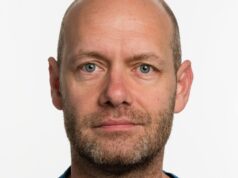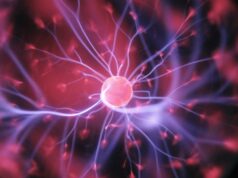 Salim Hayek is chief of the Division of Pain Medicine at University Hospitals of Cleveland and a professor in Case Western Reserve University’s Department of Anesthesiology in Cleveland, USA. Having received his medical degree from the American University of Beirut in 1991, he has been practising medicine for over 20 years and has been the principal investigator in more than 40 research projects too. As the current president of the North American Neuromodulation Society (NANS), Hayek discusses his experiences and expectations in this role, and also highlights a number of key trends that are shaping the landscape of neuromodulation and pain management right now.
Salim Hayek is chief of the Division of Pain Medicine at University Hospitals of Cleveland and a professor in Case Western Reserve University’s Department of Anesthesiology in Cleveland, USA. Having received his medical degree from the American University of Beirut in 1991, he has been practising medicine for over 20 years and has been the principal investigator in more than 40 research projects too. As the current president of the North American Neuromodulation Society (NANS), Hayek discusses his experiences and expectations in this role, and also highlights a number of key trends that are shaping the landscape of neuromodulation and pain management right now.
What initially attracted you to medicine, and the fields of neuromodulation and anaesthesiology specifically?
I have always been interested in helping people; hence, medicine felt like a natural choice. While studying medicine, I became very interested in basic research and ultimately enrolled in a PhD programme at Case Western Reserve University during my anaesthesiology training. Unfortunately, none of the projects at the time in the Physiology and Biophysics Department dealt with pain. Thus, my thesis research focused on the molecular biology and electrophysiology of the ryanodine receptor—an intracellular calcium channel involved in malignant hyperthermia. Nonetheless, I followed the basic science research on pain, in particular in relation to neuraxial delivery.
Who have your mentors been and how have they impacted your career?
As a graduate student, I followed Tony Yaksh and his pioneering neuraxial research. Though I did not train with him, I consider him a mentor and, to my delight, he and I are currently co-editing a textbook on neuraxial therapeutics. Nagy Mekhail at the Cleveland Clinic (Cleveland, USA) steered me toward clinical research and Michael Stanton-Hicks ignited my interest in neuromodulation. I would be amiss not to mention my chairmen in anaesthesiology during training: Harold Michael Marsh, who encouraged me to pursue basic research, and Helmut Cascorbi, who facilitated it. My PhD thesis advisor, Jianjie Ma, impressed me with his perseverance and hard work as well.
How has the COVID-19 pandemic impacted your time as president-elect of the North American Neuromodulation Society?
The pandemic created novel challenges for the society but also allowed time to reflect on the future as well as the organisational structure of NANS. In particular, committee restructuring and initiatives for member engagement have been introduced. On the other hand, the society had to adapt to virtual meetings and webinars along with challenges related to meeting commitments. NANS is fortunate to have had the steady hands of immediate past president Peter Konrad, and the vision of former president and current advisor Ashwini Sharan, to steer it during that difficult time. Past presidents of the society and fellow board members have been instrumental in guiding us during these unprecedented challenges too. Also, kudos to the executive director and office staff who have persevered through the pandemic.
What are you hoping to accomplish during your time as president?
NANS has experienced an impressive, rapid growth over the past 15 years, which has paralleled the advances in the field of neuromodulation. With rapid growth comes challenges of standardisation and access, however. Standardisation of education and certification of trainees and practitioners is a NANS priority. Decentralisation of leadership within the society, and empowering young minds, through special interest groups and committees are important measures for growth and adaptability in modern times. The expansion of NANS to other specialities beyond its traditional reach is also a worthwhile long-term goal. Inclusion of engineers and basic scientists is critical, as is supporting the initiatives of the independent Institute of Neuromodulation (IoN)—which was started by NANS in 2016. Additionally, heightened focus will remain on advocacy and policy matters to support access to therapy for our patients. Expansion of office staff and accomplishing autonomy in a number of services will be a strategic goal. Work is underway to improve information technology and enhance publication output, and NANS will continue to collaborate with other societies for the betterment of the field.
What do you feel has been the most important development in the field of neuromodulation during your career?
Science advances in measured increments with occasional leaps. In general, neurostimulation advances have outpaced advances in neuraxial delivery. Wireless applications and sensing technologies hold the promise to be gamechangers in the near future. Neuraxial delivery for applications beyond pain and spasticity are very promising too.

What is your proudest achievement in the field of neuromodulation or anaesthesiology?
My work on intrathecal drug delivery (IDD). While I am a big advocate of neurostimulation and carried out some research in that area, most of my work has focused in on IDD and, in particular, on the role of the adjuvant local anaesthetic bupivacaine. There are very limited data in IDD in general and we have worked to improve this evidence base using both retrospective and prospective data. Along the way, we uncovered other potential applications for intrathecal bupivacaine—particularly in managing facial pain and as a potential means to control blood pressure.
Besides your own work, what is the most interesting piece of neuromodulation research you have seen in the past year?
Sensing in neuromodulation has been an active area of research in a number of laboratories and promises to change the future of the therapy with closed-loop applications. A closed-loop system potentially allows feedback control to titrate the therapy to the patient’s needs in real time. Potential applications are wide-ranging and promise to revolutionise the field.
What is the most significant unmet need in the field right now?
Not unlike many other specialities, neuromodulation would benefit from high-level evidence in clinical research. While significant progress has been made over the past decade in the quality and quantity of research publications in the field, the vast majority of high-impact studies have been industry sponsored. NANS, through IoN, has collaborated with the International Neuromodulation Society (INS) and IMMPACT (Initiative on Methods, Measurement, and Pain Assessment in Clinical Trials) to produce a document that will hopefully act as a framework for the design of future studies on spinal cord stimulation (SCS). This work has been recently published in Pain.1 Adoption of such design considerations in future clinical neuromodulation research promises to improve ongoing efforts in the generation of high-quality information that will ultimately benefit our patients.
What do you think needs to be done to enable better, more equitable access to neuromodulation therapies for patients?
Collectively, we need to do a better job at educating patients and referring physicians on the potential of neuromodulation to improve many of the afflictions that are deemed refractory otherwise. NANS has embarked on a number of marketing initiatives in the past but more needs to be done by all stakeholders.
What advice would you give to people embarking on a career in the field of neuromodulation and anaesthesiology?
Nowadays, young graduates are barraged by data, products and engagement opportunities in neuromodulation. However, they need to carefully weigh their options as they navigate the field. It is important to critically evaluate the presented evidence and not be swayed by marketing. Continued participation in high-quality educational initiatives, such as those offered by NANS, is the cornerstone for a solid foundation in neuromodulation. In addition, engagement in volunteerism through NANS allows for service accomplishments and opportunities for growth in the field.
What are your interests outside of the field of medicine?
I played a little bit of tennis growing up, but I was never a good athlete. And, though I enjoy running outdoors, I have been hampered by a recurrent knee meniscal tear. I enjoy watching my kids compete in sports; three are hockey players and one is a swimmer. I also enjoy travelling to Europe with my wife and playing online chess.
References:
- Katz N, Dworkin R H, North R, et al. Research design considerations for randomized controlled trials of spinal cord stimulation for pain: Initiative on Methods, Measurement, and Pain Assessment in Clinical Trials/Institute of Neuromodulation/International Neuromodulation Society recommendations. Pain. 2021; 162(7): 1935–56.
Fact file:
Current appointments:
- 2012–present: Professor, Department of Anesthesiology, Case Western Reserve University, Cleveland, USA
- 2006–present: Chief, Division of Pain Medicine, University Hospitals of Cleveland, USA
Education:
- 2004: Fellow of Interventional Pain Practice, World Institute of Pain, Budapest, Hungary
- 2001: PhD, Case Western Reserve University
- 1991: MD, American University of Beirut, Lebanon
Honours (selected):
- 2022–present: President, North American Neuromodulation Society
- 2020: Distinguished Service Award, European Society of Regional Anesthesia and Pain Medicine (Spain Chapter)
- 2019: Presidential Commendation Award, American Academy of Pain Medicine
- 2017: Clinical Excellence Award, West Virginia Society of Interventional Pain Physicians
- 2015–2017, 2020, 2021: Top Doctors, Cleveland Magazine/ Castle Connolly











